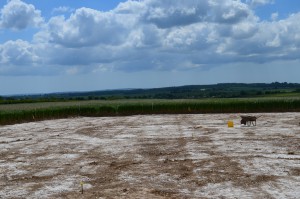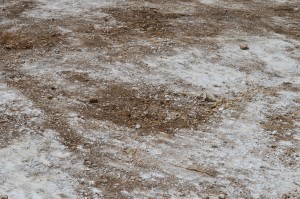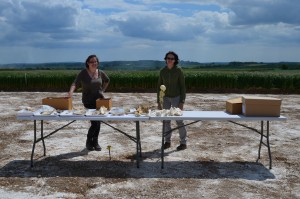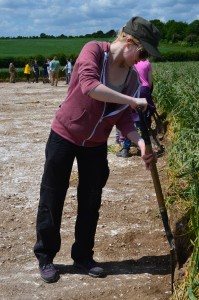Introduction
Today marked the commencement of the seventh phase in archaeological investigation of Iron Age Dorset through fieldwork; Bournemouth University’s annual Big Dig, also known as the Durotriges Dig. The excavations take place seasonally and are currently being conducted at North West Farm, Winterborne Kingston in Dorset, with the aim of discovering and recording the nature of the transition from ‘Durotrigian’ to ‘Roman’ lifestyle. The finds of the investigations are also perceived specifically within the context of non-hill-fort enclosures; complementing a departure from interpretation that is weighted toward Iron Age hill-forts (such as Maiden Castle, Hambledon Hill and Hod Hill) and their associated settlement patterns. Hopefully this will contribute to an increasingly representative body of literature on the prehistoric landscape of Dorset.
The Durotriges were a very distinct peoples, a late Iron Age tribe whose remains and artefacts are specific to South England, particularly Dorset and whose existence was first documented by the Greek philosopher Ptolemy, in the second century AD. While the remnants of the tribe are intriguing due to their scarce placement, they also portray what can be perceived as a transition from prehistory into history, fuelled by the Roman invasion. This incredible mark in history has raised many questions throughout centuries as it is not clear whether the transition was welcomed and victorious, as depicted in Roman records and art, or whether there was a more intricate and complicated struggle that took place. Information about this tribe, in the form of burials, architecture and artefacts could be crucial to gaining a more detailed understanding of whether Roman culture was gradually accepted and adopted by native British peoples or whether perhaps there were any signs of rejection or even rebellion.
Preceding seasons saw the discovery and excavation of a Durotrigan banjo enclosure, a small Roman villa, late Roman burial enclosure and a few Bronze Age ditch features. While these finds have gone someway in fulfilling the remit of research in this project, settlement evidence from the cusp of the ‘Durotrigan’ to ‘Roman’ transition is yet to be uncovered.
Geophysical surveying, carried out by Dave Stewart, has revealed a potential settlement area, where the two trenches for the 2015 season overlay. The two trenches are positioned on a slope of clay and flints above Cretaceous Upper Chalk. While this creates a distinctive contrast between the geology and human activity, the colluvium has muted some potential archaeological features. The land use for the past 2000 years has been primarily agricultural (currently crop and pasture). As such, there is extensive evidence of ploughing and may be expected to see some artefacts remote from their ‘original’ contexts and any earthworks, such as banks, to have been levelled off.
During the first site briefing conducted by Miles Russell and Paul Cheetham, it became apparent that some features are already becoming visible and some forty-five pits have been recorded in Trench A, which could have once held either a structural or storage purpose. Moreover, both trenches A and B exhibit visible, large circular features, surrounded by gullies, inferring a possible Iron Age date through their resemblance of Iron Age round houses.
Progress of the day
Following the health and safety briefing, the cleaning of the site commenced. The edges of each of the trenches were strengthened and defined and the top soil was removed through trowelling back in an attempt to further reveal the potential archaeology. The grid for Trench B was also set up, in order to enable a more accurate recording of the location of each individual feature.
Furthermore, in order to ensure the full confidence and compliance of the standard of excavation of any remains, a workshop was carried out in Trench B which detailed the differences between human and other animal burials as well as the importance of recording precisely how the remains were discovered and excavated.
Firstly, recording whether remains were discovered in an articulated or dismembered state is extremely important as it could infer the purpose of the burial; such as whether it took place as part of a ritual or whether it was a simple disposal.
Secondly, maintaining the conditions of the remains and bagging them together (for example, mandible with maxillary teeth of sheep) while also recording which side of the body they originated from could provide crucial information about the age and health of the animal and, especially when excavating phalanges or extremely small bones, unless such data was initially recorded, it may prove extremely difficult to recover that information.
Moreover, the measuring of long bones such as a humerus, which may be fragile when found in ancient contexts dating to the Iron Age, prior to their excavation and removal, could prevent the loss of anthropological information when it comes to adults (such as whether they have elongated through time due to evolution) and ageing information when dealing with juvenile remains.
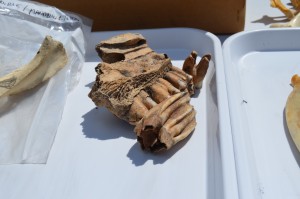

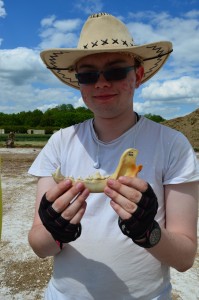
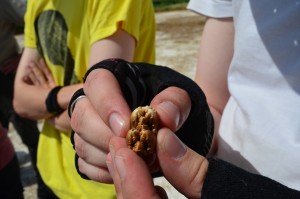
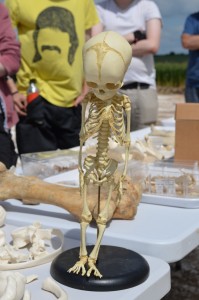 Lastly, the full recording of the exact condition and positioning of the remains is utterly crucial to recovering the maximum information about the rites and rituals of ancient peoples. The way in which humans and other animals are buried could reveal whether there is a difference in funerary treatment or disposal between males and females or even adults and juveniles.
Lastly, the full recording of the exact condition and positioning of the remains is utterly crucial to recovering the maximum information about the rites and rituals of ancient peoples. The way in which humans and other animals are buried could reveal whether there is a difference in funerary treatment or disposal between males and females or even adults and juveniles.
The introduction of such a workshop on site, at an early stage of investigation prior to any excavation will hopefully increase the standard and accuracy of on-site recording as well as prevent data loss through human error.
